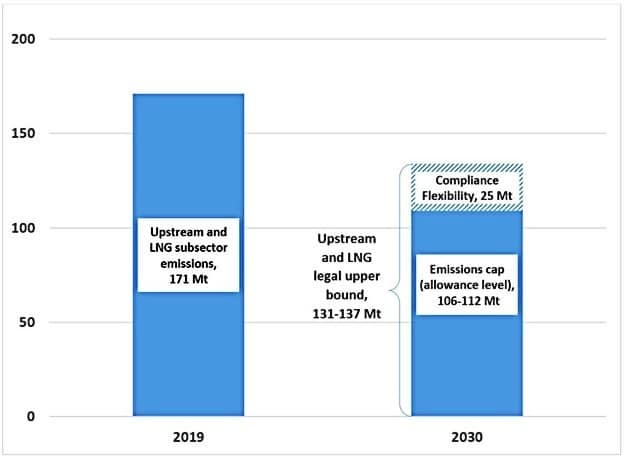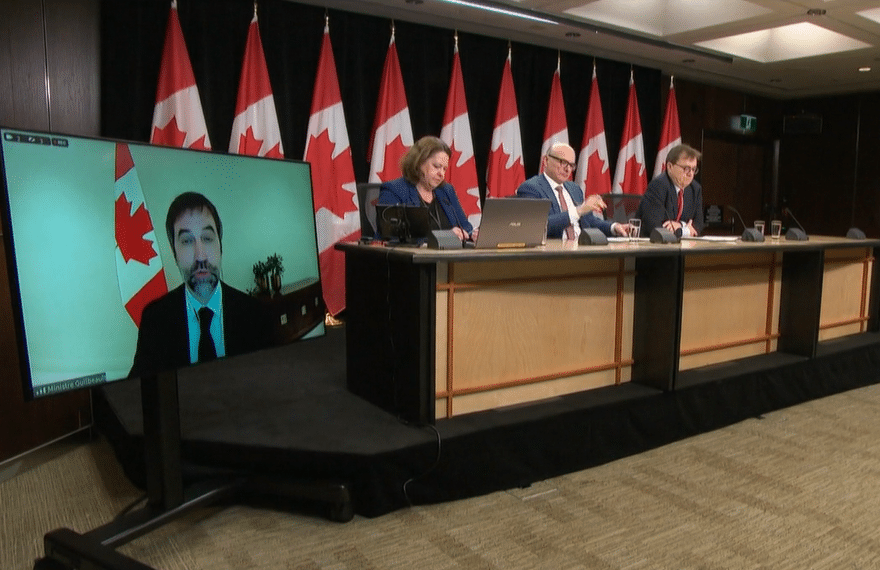The Canadian government has introduced a new rule to limit greenhouse gas emissions from the country’s oil and gas companies. Federal ministers aim to cap emissions between 35% to 38% of the levels seen in 2019 by the year 2030.
According to Environment and Climate Change Canada (ECCC), this draft regulation will likely allow emissions totaling around 106 to 112 megatons of carbon dioxide equivalent (CO2e).
During the COP28 webcast in Dubai, Environment Minister Steven Guilbeault highlighted that the sector is the biggest emitter in Canada. He emphasized that while emissions in other sectors are decreasing, the oil and gas sector continues to pollute more.
Few days ago, Canada also revealed new regulations seeking to reduce methane emissions from the oil and gas sector. It aims to cut at least 75% methane emissions over 2012 levels by 2030, which will be a crucial part of the entire cap.
Methane is responsible for about 30% of the oil and gas sector’s total GHG emissions.
Estimated and projected oil and gas sector emissions (Mt CO2e) in 2019 and 2030

Canada’s Emission Cap: Oil & Gas Balancing Act
The draft framework aims to reduce emissions while keeping Canada competitive in the world market. It sets a limit on the amount of pollution the oil and gas industry can make.
However, the rule doesn’t restrict how much the oil and gas companies produce. It was created after discussing with industry, Indigenous groups, provinces, territories, and others.
It also allows some flexibility, letting the sector emit up to about 20% to 23% below 2019 levels. This cap will help Canada cut emissions and move towards net zero by 2050.
Canada’s greenhouse gas emissions in 2020 reached 672 megatons of CO2e, as per federal data. Of this, the oil and gas sector contributed 178 megatons of CO2e, making up 26% of the total emissions. Transportation followed closely, accounting for 159 megatons or 25% of the emissions.
- The said sector, responsible for 28% of Canada’s pollution in 2021, emitted 201 million metric tons in 2019. That’s 20% higher than 2005.
Minister Guilbeault emphasized the need for immediate actions to meet the collective goal of achieving carbon neutrality by 2050. He also noted that:
“We look forward to industry talks to get this draft framework right. This is a challenge of our time and also a great opportunity.”
The federal government is also considering implementing a national cap-and-trade system to limit GHG emissions further. Proposed regulations will also establish reporting and verification processes, with a gradual phase-in of the planned system from 2026 to 2030.
Interested parties, including the industry and stakeholders, have until February 5, 2024, to submit comments and input regarding the draft. The finalized regulations are anticipated to be issued by early 2025.
Federal Natural Resources Minister Jonathan Wilkinson highlighted the importance of considering the competitiveness of oil and gas producers in Alberta, British Columbia, Saskatchewan, and Newfoundland and Labrador.
However, specific details regarding this aspect’s role in shaping the regulations were not elaborated upon during the webcast.
Controversy and Opposition Surrounding the Cap
The draft allows companies to buy and trade a certain number of emissions allowances, also called carbon offset credits. They can either buy carbon offsets or contribute to a fund that reduces emissions.
While the draft regulations aim for reducing harmful emissions from the most polluting sector, opposition abound.
The Canadian Association of Energy Contractors opposes the move, fearing it will negatively impact workers and small to medium-sized businesses. The association’s leader, expressed concerns about higher energy costs and job losses due to the cap.
Similarly, Alberta Premier Danielle Smith criticized the federal government, calling the emissions cap an “intentional attack on Alberta’s economy”. She had invoked an act allowing the province to override federal clean-electricity regulations in opposition.
The Alberta government issued a regulation in 2016 that puts a cap of 100 million MT for the province’s oil sands producers. At present, Alberta’s total GHG emissions stand at about 70 million MT, according to information on the provincial government website.
For another director, the cap on Canada’s GHG emissions will affect junior producers with <20,000 b/d output. They’ll be casted.
The cap-and-trade system will regulate direct GHG emissions, including those indirectly related to oil and gas production and carbon storage. Thus, it would cover various facilities such as offshore operations and LNG plants.
The Environment Minister stressed that companies making substantial profits should invest in Canadian jobs and communities. However, no new government funding was announced, despite Canada’s previous pledge of $9.1 billion in tax credits for carbon capture systems.
Canada’s proposed regulations to cap emissions in the oil and gas sector mark a pivotal step toward addressing climate change. The draft rule intends to reduce pollution without hampering production. Despite debates and concerns from industry leaders about potential economic impacts, the government is emphasizing the urgency of climate action and inviting feedback until early 2024.

